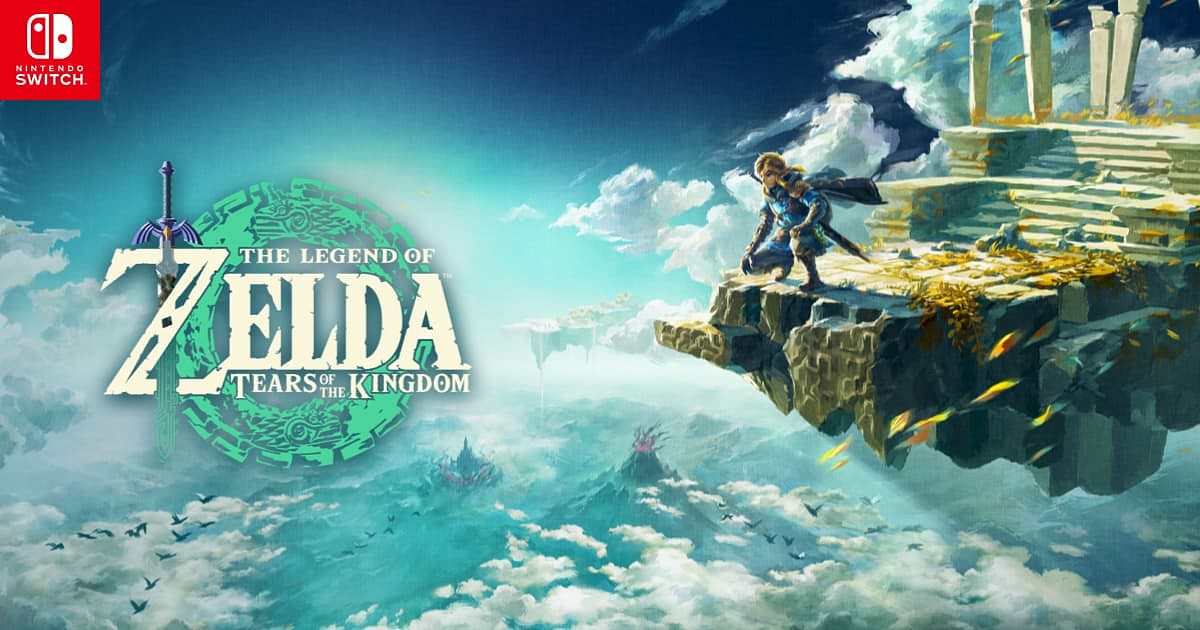
The newest Zelda game release, Tears of the Kingdom, is a sequel to the genre-enriching open world game, The Legend of Zelda: Breath of the Wild (2017). Breath of the Wild's most celebrated feature was its huge, geographically plausible, and detailed world map. This world was complete with tons things to do in every direction and enough space between those things to illicit a one of a kind sense of serenity getting there. When it was announced that the sequel, Tears of the Kingdom, would reuse that same map, some gamers decried the new game as glorified DLC, meaning that the sequel would only bring nominal changes. These same gamers are now faced with a game that sure, uses the same old map, but sandwiched in between two whole new ones. But while the sheer size of Tears will keep curious players busy for hundreds of hours, another cohort of fans has become obsessed with the technical marvels that are the game's new abilities given to the player character Link. That cohort of amazed fans is game developers.
Game developers can come from multiple professions. Of course you have game programmers, the people who create the logic that makes the game and physics engine run for productions like Tears of the Kingdom. Game designers create the challenging and fun elements in a game from a top level perspective. There are 2d and 3d artists and animators responsible for all the things you see on screen, which of course puts the video in video game. Sometimes a game developer has to wear all these hats at once, and that type of person is probably the most flabbergasted with what Tears of the Kingdom has to offer. Why? Well, this is a tautological statement, but Tears was very clearly made by game developers, and it shows.
Probably the easiest thing to parse about video game production from an outside perspective is the video aspect. You know, the part of the game you can see. Games taking place in three dimensional space need people to model those 3d objects, and those artists use modeling software much as Autodesk Maya, 3ds Max or Blender to get started. With the most basic functions of these tools, something as simple as a cube can be moved along the xyz axes, connected to other objects and animated through the laws of physics with Inverse Kinematics, and rotated around with a spherical user interface.

The lines in purple are the skeleton that makes the mesh model move (Autodesk Maya)
In Tears of the Kingdom, Link has a new ability named Ultrahand. This allows him to grab all kinds of objects around him, like tree branches, giant metal blocks, wood for construction and advanced technological tools from the past. Once he has grabbed them, he can move them smoothly along xyz axes, glue them to other objects and watch physics take hold, and rotate them using a spherical graphical user interface. I wonder where the devs got all of their ideas?

They're the same picture
The game has something like 152 shrines, which are mini-dungeons you can find throughout the vast world that reward you with an important item upon completion. These dungeons are occasionally combat challenges, but most of them are pretty much puzzles built around using Ultrahand to craft interactions with the physics system to get from point A to point B. One of my favorite examples involved basically making your own pinball flipper out of assorted materials to launch a big ass falling ball into a giant button in order to open a gate. A particularly difficult shrine for me involved figuring out how to ride moving carts on precarious rails by fastening steel plates from the bottom of the moving cart in between the rails to keep you from falling off on breakneck turns across bottomless chasms. The game designers give you hints in the right direction, but pretty much all of these shrines can be figured out in any way you please with whatever bizarre device you can make.
Now, game developers have frequently let players loose in a sandbox of their own tools. Things like Mario Maker, Garry's Mod and really any game's software development kit allow the average gamer to go wild with a game's pre-made assets, snippets of code and existing physics engines. Gamers normally use these tools to create their own modified games or machinima videos. Tears of the Kingdom is different however. Ultrahand is basically giving players the most basic functions of Autodesk Maya to use in real time. You can use Ultrahand to accomplish almost anything you want in the game, from finding and solving the 152 shrines, to escorting tired forest spirits to their little friends, to building a giant bridge over quicksand with whatever you can find, to crafting working death mechas with advanced technology, to just uselessly making a statue out of meat. This isn't just giving players a sandbox to play developer in, this is making a game out of playing developer.

Meat-man crafting. There are worse lazy Sunday activities
Well, perhaps that statement isn't exactly one to one. Something like Game Dev Tycoon is more of a straight forward gamification of the development process. But what Tears of the Kingdom provides is a more fantastical and abstract version of of an important aspect of game dev. Every 3d artist has imagined using a giant green hand to manipulate the world around them like Magneto, stick stuff together and watch how it would all react if you strapped a cartoon rocket to it to fling it into space. I mean, it can't just be me. Tears of the Kingdom scratches that very niche itch that I don’t think anyone really thought could be reached until now.




